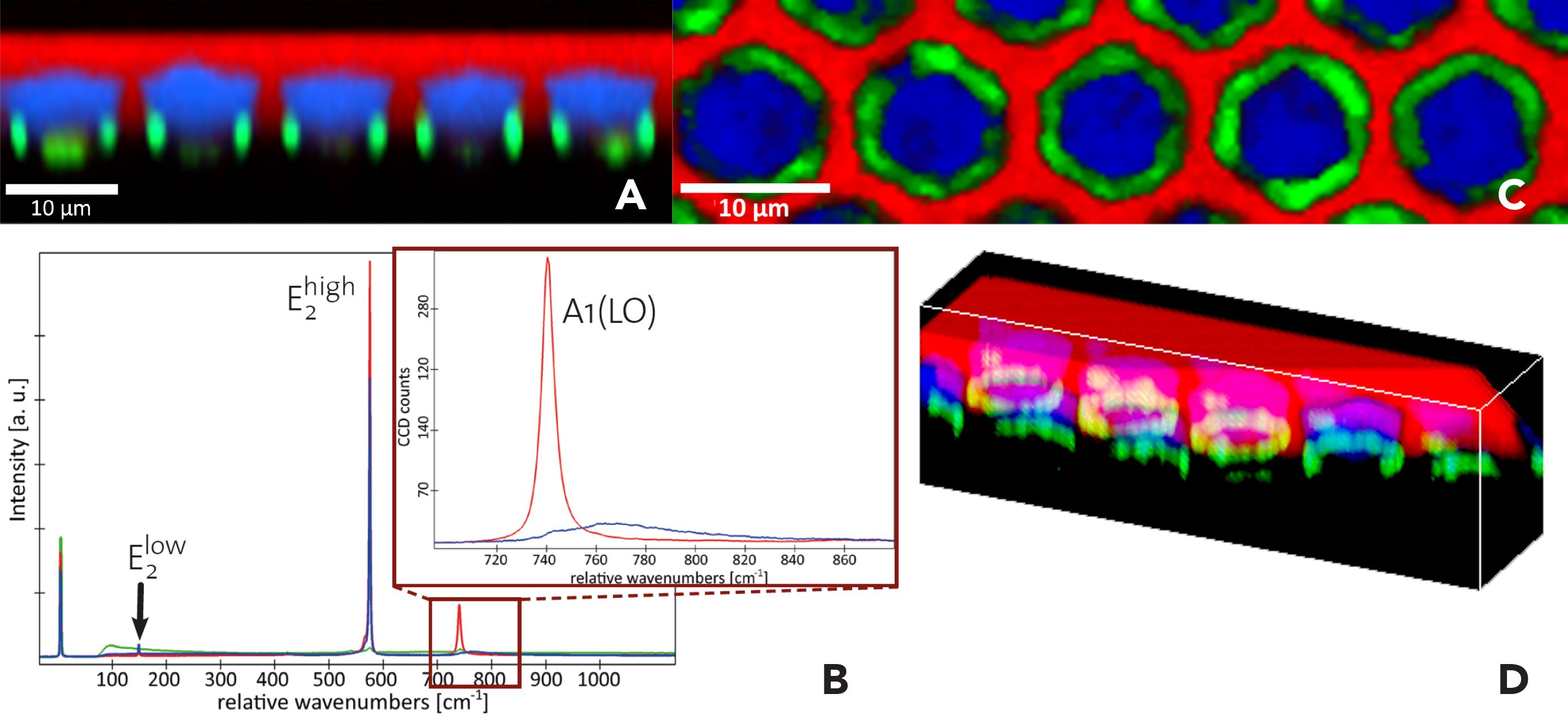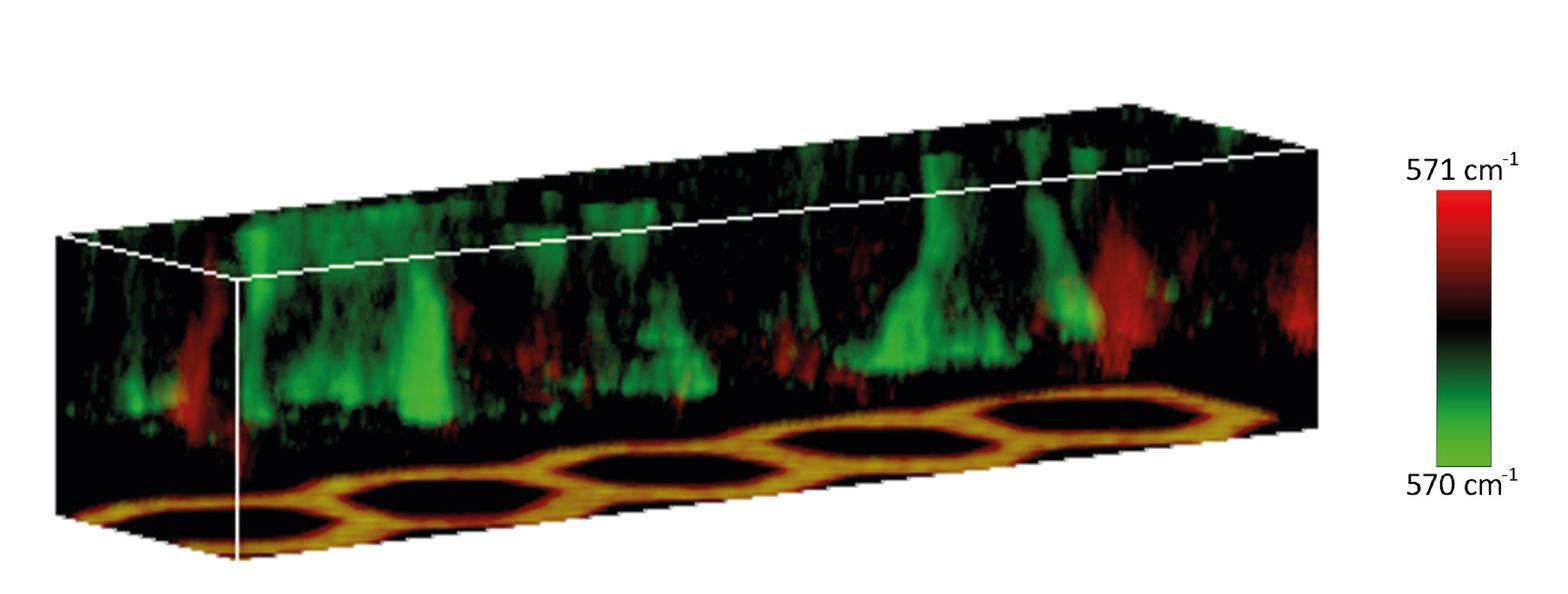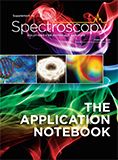Gallium Nitride Quality and Stress Field Characterization with 3D Confocal Raman Imaging

Experimental Conditions
A GaN sample grown on a sapphire substrate featuring hexagonal pits, courtesy of Dr. Eberhard Richter (Materials Technology Department of the Ferdinand Braun Institute, Berlin, Germany), was investigated, and stress fields were visualized. All measurements were carried out using a WITec alpha300 R confocal Raman microscope with an excitation wavelength of 532 nm and a UHTS 300 spectrometer.
Results and Conclusion
A 2D depth scan was performed and the resulting Raman image (Figure 1A) was color coded according to the measured spectra (Figure 1B). The red spectrum shows features typical of GaN and is dominant at the sample surface, showing that the crystal grown there was high in quality. The green spectrum shows enhanced fluorescence at low wavenumbers and is found only at the substrate pit walls. The blue spectrum measured above the pits is distinct from the red one (Figure 1B, inset). The A1(LO) peak is upshifted and broadened compared to the red spectrum, indicating a lower quality GaN crystal.
Figure 1: 3D Raman analysis of a GaN crystal grown on a patterned sapphire substrate. A: Depth scan (240 x 80 pixels on an area of 60 x 20 µm2) along the red line in Figure 1. B: Corresponding Raman spectra. In the inset, the green spectrum is omitted for clarity. C, D: 3D Raman image of the sample volume (180 x 45 x 20 pixels in a volume of 60 x 15 x 20 µm2). At the front right corner, a part of the structure is removed.

Next, a stack of 2D scans was performed at different focal planes. Figure 1C shows one layer from the stack. A 3D representation was generated from the image stack (Figure 1D). The fluorescence signal (green) forms rings at the walls of the pits, while the tops of the pits are dominated by the distorted GaN spectrum (blue). The topmost layers show an undistorted GaN spectrum (red).
In order to reveal stress fields in the GaN sample, a peak shift analysis was performed for the entire z-stack. The position of the E2high peak near 570 cm-1 was quantified for each spectrum by fitting a Lorentzian function. Figure 2 shows the same sample volume as in Figure 1D, but color coded according to the determined peak position. The stress fields propagate from the interface to the surface mainly in tube-like structures, which become narrower towards the surface, again indicating higher crystal quality. However, the overall differences in the peak positions were quite small (<1 cm-1) and thus, the overall differences in the strain of the GaN crystal were also small. Nevertheless, the peak shift sensitivity was sufficient to measure and visualize them.
Figure 2: 3D representation of stress fields in the GaN crystal (the same sample volume as in Figure 2D). The position of the Raman peak near 570 cm-1 is color coded, revealing stress fields in the crystal.

WITec GmbH
Lise-Meitner-Str. 6, D-89081 Ulm, Germany
tel. +49 (0) 731 140 700; +49 (0) 731 140 70 200
Website: www.WITec.de

New Study Reveals Insights into Phenol’s Behavior in Ice
April 16th 2025A new study published in Spectrochimica Acta Part A by Dominik Heger and colleagues at Masaryk University reveals that phenol's photophysical properties change significantly when frozen, potentially enabling its breakdown by sunlight in icy environments.
Advanced Raman Spectroscopy Method Boosts Precision in Drug Component Detection
April 7th 2025Researchers in China have developed a rapid, non-destructive Raman spectroscopy method that accurately detects active components in complex drug formulations by combining advanced algorithms to eliminate noise and fluorescence interference.